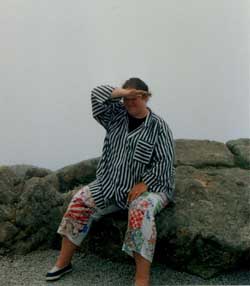Book review – The Cookery of England, by Elisabeth Ayrton, paperback from Penguin 1977.
I think I've had this book since it first came out in paperback: I can certainly remember cooking recipes from it during the late seventies. It's one of my favourite sorts of cookery book – the recipes work, and there's lots of background historical material which is interesting in its own right. Ayrton worked with Special Ops in World War Two, where she might have run into Julia Child, and was married to Michael Ayrton the sculptor. I've seen his Minotaur at the Yorkshire Sculpture Park, it's very powerful and erotic. She wrote fiction, non-fiction centred on her academic specialism (archaeology) and some other cookery / food history books, although this is the only one I own. I see from Amazon that some of the others were reprinted in the mid-80s, and they would deffo be worth a look.
This one is subtitled "a collection of recipes for traditional dishes of all kinds, from the fifteenth century to the present day, with notes of their social and culinary background". The chapters are organised well, it starts with meat, then veers off through savoury pies (a chapter to themselves), and back via potted meats, brawns, galantines etc to poultry and game, fish, sauces, stuffings and forcemeats before even thinking about soup and veg. Desserts are split into hot puddings, cold sweets, and "banqueting stuff", then, of course, the savouries. Bread and cakes are a bit of an afterthought, and you're better off with Elizabeth David's Bread and Yeast Cookery for a fuller account. But the seed cake recipe is simple and excellent. I prefer this to the David Spices, Salts and Aromatics in the English Kitchen, the recipes have been made more user-friendly and the text is more general.
Throughout there are easy recipes for things you thought either long gone or that you had to buy ready-made – crumpets, brawn, cheese straws. She's stuffed it with loads of recipes from long gone cooks, that we know more of in the 21st century than we did in the late 20th – the likes of Hannah Glasse and Eliza Acton are much more in the common pool of knowledge now. Back in the seventies some of the recipes seemed radical or at least trendy, and looking through it again there are some that fit well with today's sorts of menus. Iced beetroot soup, syllabubs and flummeries, salmon roast with cloves, rosemary and orange, a gooseberry and ginger sauce for mackerel or pork. There's a recipe for stuffed vine leaves from the seventeenth century, and a chicken stew with pineapple from the eighteenth. She doesn't try to hide the appalling stuff – Sky Blue and Sinkers, the Cornish soup for children when times were hard: mix a little flour and skimmed milk to a paste, add as much boiling water as you need and cook for a minute or two. Give each child a bowl with a single piece of barley bread in it, and pour on your "soup". The bread will rise to the surface and gradually sink into the pale blue of the thin liquid. Hours of endless fun for the little ones.
Most of the recipes have been restructured to serve 4 – 6, or 10 – 12 where they are big dishes more suitable for buffet celebrations or Christmas. It's great retro-dinner party or holiday cooking. I remember causing a stir nearly 30 years ago with her duck in port – you soak cherries in port for 24 hours, then roast the duck, basting constantly with the port and adding the cherries for the last half hour. And there's another duck recipe with a sauce made from onions and cucumber macerated and stewed in claret.
Some of the material has not dated well, though, although it's authentic enough! The mini-chapter (about two pages) on curry lists a selection of accompaniments such as mango chutney and bombay duck (fine) then goes on to the classic set of little dishes you got with curry at home in the seventies – sliced banana, chopped apple, cucumber, tomatoes. We used to have dessicated coconut, and grated cheese, as well. But no mention of yoghourt, mint, garlic, or fresh chillies, even though all of these were available – maybe not easily.
Best of all are the instructions for plain baked meat – she's at pains to explain this isn't really roast meat, but without an open fire it's the best we're likely to get. Dredge the meat with highly seasoned flour or a special mixture for specific joints, put into a roasting tray on top of a bit of the appropriate fat, put a pat of fat on top, stick in a hot oven (Gas Mark 6) for 10 minutes, turn the oven down to Gas Mark 4, and cook according to weight. Rareish beef takes 17 – 20 minutes per pound, a four pound chicken takes about an hour. Given that the meat needs to sit anyway before carving, timings don't need to be precise as you can continue to keep it warm while you finish the veg. You get the crisp outside and pink inside on the beef, the chicken is golden but moist – it's never failed.


 .
.
Leave a comment